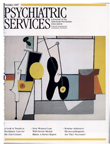Ethnic and racial differences in perceptions of dangerousness of persons with mental illness
Abstract
Ethnic and racial differences in the stigma associated with mental illness in the general population were examined through secondary analysis of data from a survey of a nationally representative sample (N = 1,468) on attitudes toward homeless and homeless mentally ill people. American Indian (1 percent of the sample), Asian-Pacific Islander (1.5 percent), black (10 percent), and Hispanic respondents (4 percent) were compared with white respondents (82 percent) to determine if the groups differed in their perception of the dangerousness of mental patients and if contact with mentally ill persons moderated ethnic and racial differences in perceptions of dangerousness. Asian and Hispanic respondents perceived mental patients as significantly more dangerous than did white respondents. Increased contact with mentally ill people was associated with lower levels of perceived dangerousness among white respondents but not among black respondents.



